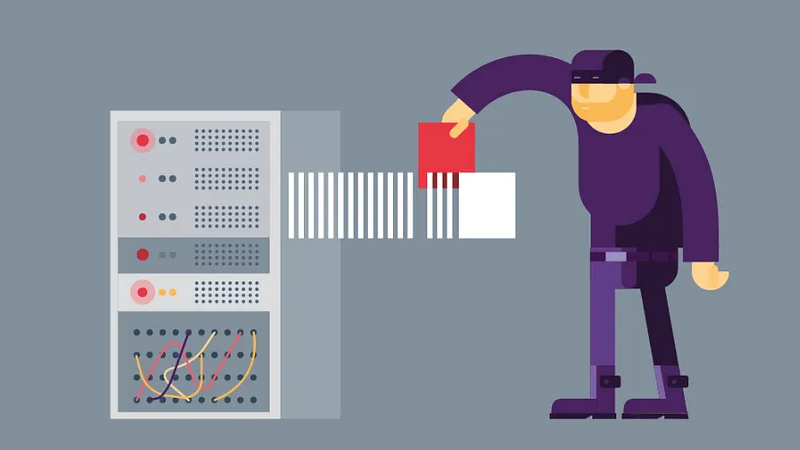Understanding Common IT Security Threats:
Safeguarding Your Digital Environment

In today's interconnected world, where businesses increasingly rely on technology, understanding IT security threats is crucial. Cybercriminals are constantly evolving their tactics, making it imperative for organizations and individuals to stay informed and vigilant.
In this blog post, we'll explore some of the most common IT security threats and how you can protect yourself and your organization.
1. Malware: The Persistent Menace
Definition: Malware, short for malicious software, encompasses a variety of harmful programs designed to damage or disrupt systems. This category includes viruses, worms, trojans, and ransomware.
Impact: Malware can lead to data theft, system failures, and significant downtime. Ransomware, in particular, encrypts data and demands payment for its release, often crippling businesses until the ransom is paid.
Prevention: Implement robust antivirus solutions, conduct regular system updates, and educate employees about safe browsing practices.
2. Phishing: The Art of Deception
Definition: Phishing involves tricking individuals into providing sensitive information, often through fraudulent emails or websites that appear legitimate.
Impact: Successful phishing attacks can result in credential theft, financial loss, and unauthorized access to systems.
Prevention: Train employees to recognize phishing attempts, utilize email filtering tools, and encourage the use of multi-factor authentication for sensitive accounts.
3. Denial of Service (DoS) Attacks: Disrupting Access
Definition: A DoS attack aims to make a service unavailable by overwhelming it with traffic. Distributed Denial of Service (DDoS) attacks use multiple systems to launch the assault.
Impact: These attacks can cause service outages, leading to lost revenue and damaged reputation.
Prevention: Employ network redundancy, monitor traffic patterns for unusual spikes, and use DDoS mitigation services.
4. Man-in-the-Middle (MitM) Attacks: Eavesdropping on Communication
Definition: MitM attacks occur when a malicious actor intercepts communication between two parties, often without their knowledge.
Impact: This can lead to data breaches and compromised sensitive information.
Prevention: Use encryption for data in transit, implement secure Wi-Fi protocols, and ensure the use of VPNs for remote access.
5. Insider Threats: The Danger Within
Definition: Insider threats come from individuals within an organization, such as employees or contractors, who misuse their access for malicious purposes or inadvertently expose data.
Impact: Insider threats can lead to data leaks, financial loss, and damage to company morale.
Prevention: Implement strict access controls, conduct regular audits, and foster a culture of security awareness.
6. SQL Injection: Exploiting Database Vulnerabilities
Definition: SQL injection attacks involve inserting malicious SQL code into a query, allowing attackers to manipulate databases.
Impact: This can result in unauthorized access to sensitive data or even data loss.
Prevention: Use parameterized queries, employ web application firewalls, and regularly test applications for vulnerabilities.
7. Credential Stuffing: Taking Advantage of Reused Passwords
Definition: Credential stuffing involves using stolen usernames and passwords to gain unauthorized access to accounts.
Impact: This can lead to account takeovers, data breaches, and significant financial loss.
Prevention: Encourage unique, complex passwords, implement multi-factor authentication, and monitor account activity for suspicious behavior.
8. Zero-Day Exploits: Exploiting Unpatched Vulnerabilities
Definition: Zero-day exploits target software vulnerabilities that are unknown to the vendor and, therefore, unpatched.
Impact: These attacks can have devastating consequences, as they exploit weaknesses before defenses can be established.
Prevention: Keep software up to date, conduct regular vulnerability assessments, and stay informed about emerging threats.
Definition: Malware, short for malicious software, encompasses a variety of harmful programs designed to damage or disrupt systems. This category includes viruses, worms, trojans, and ransomware.
Impact: Malware can lead to data theft, system failures, and significant downtime. Ransomware, in particular, encrypts data and demands payment for its release, often crippling businesses until the ransom is paid.
Prevention: Implement robust antivirus solutions, conduct regular system updates, and educate employees about safe browsing practices.
2. Phishing: The Art of Deception
Definition: Phishing involves tricking individuals into providing sensitive information, often through fraudulent emails or websites that appear legitimate.
Impact: Successful phishing attacks can result in credential theft, financial loss, and unauthorized access to systems.
Prevention: Train employees to recognize phishing attempts, utilize email filtering tools, and encourage the use of multi-factor authentication for sensitive accounts.
3. Denial of Service (DoS) Attacks: Disrupting Access
Definition: A DoS attack aims to make a service unavailable by overwhelming it with traffic. Distributed Denial of Service (DDoS) attacks use multiple systems to launch the assault.
Impact: These attacks can cause service outages, leading to lost revenue and damaged reputation.
Prevention: Employ network redundancy, monitor traffic patterns for unusual spikes, and use DDoS mitigation services.
4. Man-in-the-Middle (MitM) Attacks: Eavesdropping on Communication
Definition: MitM attacks occur when a malicious actor intercepts communication between two parties, often without their knowledge.
Impact: This can lead to data breaches and compromised sensitive information.
Prevention: Use encryption for data in transit, implement secure Wi-Fi protocols, and ensure the use of VPNs for remote access.
5. Insider Threats: The Danger Within
Definition: Insider threats come from individuals within an organization, such as employees or contractors, who misuse their access for malicious purposes or inadvertently expose data.
Impact: Insider threats can lead to data leaks, financial loss, and damage to company morale.
Prevention: Implement strict access controls, conduct regular audits, and foster a culture of security awareness.
6. SQL Injection: Exploiting Database Vulnerabilities
Definition: SQL injection attacks involve inserting malicious SQL code into a query, allowing attackers to manipulate databases.
Impact: This can result in unauthorized access to sensitive data or even data loss.
Prevention: Use parameterized queries, employ web application firewalls, and regularly test applications for vulnerabilities.
7. Credential Stuffing: Taking Advantage of Reused Passwords
Definition: Credential stuffing involves using stolen usernames and passwords to gain unauthorized access to accounts.
Impact: This can lead to account takeovers, data breaches, and significant financial loss.
Prevention: Encourage unique, complex passwords, implement multi-factor authentication, and monitor account activity for suspicious behavior.
8. Zero-Day Exploits: Exploiting Unpatched Vulnerabilities
Definition: Zero-day exploits target software vulnerabilities that are unknown to the vendor and, therefore, unpatched.
Impact: These attacks can have devastating consequences, as they exploit weaknesses before defenses can be established.
Prevention: Keep software up to date, conduct regular vulnerability assessments, and stay informed about emerging threats.
Staying Ahead of Threats
The landscape of IT security threats is constantly evolving, and staying informed is your best defense. By understanding these common threats and implementing preventative measures, organizations can significantly reduce their risk of falling victim to cyberattacks.
Investing in employee training, adopting robust security measures, and fostering a culture of cybersecurity awareness can go a long way in safeguarding your digital environment. Remember, security is not just an IT issue; it's a shared responsibility that requires vigilance from everyone in the organization.







